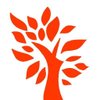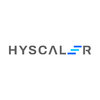Filter interviews by
Indian Peroxide Interview Questions and Answers
Indian Peroxide Interview Experiences
4 interviews found
I appeared for an interview before Sep 2020.
Interview Questionnaire
16 Questions
- Q1. What about him self?
- Q2. Please share your previous company experience and what's role & responsibility in previous company?
- Q3. What achieved major in previous company ?
- Q4. Why is choose safety field?
- Ans.
I chose the safety field because I believe that everyone deserves to work in a safe environment.
Passion for ensuring the well-being of others
Desire to prevent accidents and injuries
Interest in implementing safety protocols and procedures
Belief that safety is a fundamental human right
Examples: implementing safety measures in construction sites, ensuring compliance with safety regulations in factories, conducting safety
- Q5. What is hazards?
- Ans.
Hazards are potential sources of harm or danger that can cause injury, illness, or damage to property.
Hazards can be physical, chemical, biological, or ergonomic in nature.
Examples of physical hazards include slippery floors, falling objects, and loud noises.
Chemical hazards can include exposure to toxic substances or flammable materials.
Biological hazards can involve exposure to infectious agents or allergens.
Ergonomi...
- Q6. What is unsafe conditions & act?
- Ans.
Unsafe conditions & acts are situations or behaviors that can lead to accidents or injuries in the workplace.
Unsafe conditions include things like faulty equipment, poor lighting, and cluttered workspaces.
Unsafe acts include things like not wearing proper protective gear, using equipment improperly, and horseplay.
Identifying and addressing unsafe conditions and acts is crucial for maintaining a safe work environment.
Re...
- Q7. What is MSDS ?
- Ans.
MSDS stands for Material Safety Data Sheet.
MSDS provides information about the hazards, handling, storage, and emergency procedures for a particular substance or product.
It is a document required by law for all hazardous chemicals.
MSDS includes information on the chemical composition, physical and chemical properties, and health effects of the substance.
It also provides information on first aid measures, firefighting m...
- Q8. What is HIRA?
- Ans.
HIRA stands for Hazard Identification and Risk Assessment.
HIRA is a systematic process of identifying potential hazards and analyzing the associated risks.
It involves identifying the likelihood and consequences of a hazard occurring and determining appropriate control measures.
HIRA is commonly used in industries such as construction, manufacturing, and oil and gas.
Examples of hazards that may be identified through HIRA...
- Q9. How many types of hazards?
- Ans.
There are three types of hazards: physical, chemical, and biological.
Physical hazards include slips, falls, and machinery accidents.
Chemical hazards include exposure to toxic substances and flammable materials.
Biological hazards include exposure to viruses, bacteria, and other microorganisms.
Hazards can also be classified as acute or chronic, depending on the duration and severity of exposure.
Examples of acute hazards ...
- Q10. What is NFPA?
- Ans.
NFPA stands for National Fire Protection Association.
NFPA is a non-profit organization that develops and publishes codes and standards related to fire safety and prevention.
Their codes and standards are widely used by fire departments, insurance companies, and other organizations to ensure safety.
Examples of NFPA codes include NFPA 70 (National Electrical Code), NFPA 101 (Life Safety Code), and NFPA 13 (Standard for th
- Q11. What is JSA ? What difference JSA & Risk assessment?
- Ans.
JSA stands for Job Safety Analysis. It is a process of identifying potential hazards and risks associated with a specific job or task.
JSA involves breaking down a job into individual steps and analyzing each step for potential hazards and risks.
The goal of JSA is to identify and eliminate or mitigate potential hazards before they cause harm.
JSA is typically used in industries such as construction, manufacturing, and he...
- Q12. What is HAZOP?
- Ans.
HAZOP stands for Hazard and Operability Study, a structured and systematic approach to identify potential hazards and operability issues.
HAZOP is a team-based approach to identify and evaluate potential hazards and operability issues in a process or system
It involves breaking down the process or system into smaller parts and analyzing each part for potential deviations from the intended design
The team uses a set of gui...
- Q13. What is fire? Classification of fire
- Ans.
Fire is a chemical reaction that releases heat, light, and various gases. It can be classified into different types based on the fuel involved.
Fire is a rapid oxidation process that occurs when fuel, heat, and oxygen are present.
It releases energy in the form of heat and light.
Fire can be classified into five main types: Class A, Class B, Class C, Class D, and Class K.
Class A fires involve ordinary combustible material...
- Q14. What is Fire point& flash point?
- Ans.
Fire point is the temperature at which a fuel ignites and continues to burn, while flash point is the temperature at which a fuel ignites momentarily.
Fire point is higher than flash point.
Flash point is used to classify flammable liquids.
Examples of flash point: gasoline (−43 °C), diesel fuel (52 °C), kerosene (38 °C).
Examples of fire point: gasoline (246 °C), diesel fuel (74 °C), kerosene (74 °C).
- Q15. Chemical handling
- Q16. Induction , training, job specific training,
Interview Preparation Tips
Top Indian Peroxide Safety Engineer Interview Questions and Answers
Safety Engineer Interview Questions asked at other Companies
(2 Questions)
- Q1. How to start pumps
- Ans.
Pumps can be started by following proper procedures and ensuring all safety measures are in place.
Check if the pump is properly connected to power source
Ensure all valves are open and there are no blockages in the system
Start the pump by following the manufacturer's instructions
Monitor the pump operation for any abnormalities
Shut down the pump properly when not in use
- Q2. How to do priming
- Ans.
Priming is the process of filling a pump with liquid to create suction and facilitate the flow of the liquid through the system.
Ensure the pump is properly connected to the system
Open the pump's priming valve to allow air to escape and liquid to enter
Monitor the pump's pressure gauge to ensure proper priming
Close the priming valve once the pump is fully primed
Start the pump to begin the flow of liquid through the syste
DCS Engineer Interview Questions asked at other Companies
I applied via Referral
(3 Questions)
- Q1. 1- What is the know about store and what you had worked in previous company.
- Q2. What is your current CTC
- Q3. What is your expectations.
Interview Preparation Tips
Store Executive Interview Questions asked at other Companies
I applied via Naukri.com and was interviewed before Jul 2021. There was 1 interview round.
(2 Questions)
- Q1. DCS , Flow meters , Control valve
- Q2. Filed Instruments , control systems
Interview Preparation Tips
Instrument Engineer Interview Questions asked at other Companies
Indian Peroxide interview questions for popular designations
Interview questions from similar companies

I appeared for an interview in Mar 2017.
Interview Questionnaire
5 Questions
- Q1. Related to semiconductors, processors etc. were asked.
- Q2. Strength
- Q3. Weaknesses
- Q4. Hobby
- Q5. If there are 200 fishes in an aquarium. 99% are red. How many fishes have to be removed to make the red fishes 98 % in the aquarium?
- Ans.
To make the red fishes 98%, 50 fishes have to be removed from the aquarium.
Calculate 1% of 200 fishes, which is 2 fishes.
To make the red fishes 98%, subtract 1% (2 fishes) from 99% (198 fishes).
To find the number of fishes to be removed, divide the difference by 1% (2 fishes).
Therefore, 50 fishes have to be removed to make the red fishes 98%.
Interview Preparation Tips
Experience: There were 40 aptitude questions of variable difficulty. More questions revolved around topics like time and work, distance, speed, time, profit loss, age etc.
Tips: A regular and prior preparation will go a long way in determining a good test score.
Use tricks to solve the questions and calculations should be fast.
Duration: 30 minutes
Total Questions: 40
Round: Test
Experience: The questions weren't that tough when it came to programming. An example would be conversion of temperature from Celsius to Fahrenheit and vice versa. This was a question in my paper. So I'm hoping the difficulty would be more or less the same.
Tips: Do certified programming courses. They help you a lot in cracking good jobs.
Duration: 45 minutes
Total Questions: 3
Round: Puzzle Interview
Tips: This can be tough if you can't imagine scenarios and situations. So make sure you inculcate critical problem solving thinking in your everyday life. I feel that's the best way to do things in this round.
Round: Technical Interview
Experience: This was a short interview so not much happened.
Tips: Whatever you do just know your stuff properly.
Round: HR Interview
Experience: It was a simple interview. Basic questions and their basic answers helped me get through it.
Tips: The tip would be to stay positive in your approach while answering the questions
Skills: Technical Skills, Interpersonal Communication, Aptitude
College Name: VIT Vellore

I appeared for an interview in Feb 2017.
Interview Preparation Tips
Experience: It was a simple aptitude test in which around 150 students cleared the test.
Duration: 1 hour
Total Questions: 40
Round: Test
Experience: Three programs were given and we had to write the code in either java ,c or c++ and get the required output.Around 90 students cleared this round.
Duration: 1 hour 30 minutes
Total Questions: 3
College Name: VIT Vellore

I appeared for an interview in Mar 2017.
Interview Questionnaire
5 Questions
- Q1. Related to semiconductors, processors etc. were asked.
- Q2. Strength
- Q3. Weaknesses
- Q4. Hobbies
- Q5. If there are 200 fishes in an aquarium. 99% are red. How many fishes have to be removed to make the red fishes 98 % in the aquarium?
- Ans.
To make the red fishes 98%, 50 fishes have to be removed from the aquarium.
Calculate 1% of 200 fishes to find the number of red fishes.
Subtract the number of red fishes from 200 to find the number of non-red fishes.
Calculate 2% of the total number of fishes to find the desired number of red fishes.
Subtract the desired number of red fishes from the current number of red fishes to find the number of fishes to be removed.
Interview Preparation Tips
Experience: There were 40 aptitude questions of variable difficulty. More questions revolved around topics like time and work, distance, speed, time, profit loss, age etc.
Tips: A regular and prior preparation will go a long way in determining a good test score.
Use tricks to solve the questions and calculations should be fast.
Duration: 30 minutes
Total Questions: 40
Round: Test
Experience: The questions weren't that tough when it came to programming. An example would be conversion of temperature from Celsius to Fahrenheit and vice versa. This was a question in my paper. So I'm hoping the difficulty would be more or less the same.
Tips: Do certified programming courses. They help you a lot in cracking good jobs.
Duration: 45 minutes
Total Questions: 3
Round: Puzzle Interview
Tips: This can be tough if you can't imagine scenarios and situations. So make sure you inculcate critical problem solving thinking in your everyday life. I feel that's the best way to do things in this round.
Round: Technical Interview
Experience: This was a short interview so not much happened.
Tips: Whatever you do just know your stuff properly.
Round: HR Interview
Experience: It was a simple interview. Basic questions and their basic answers helped me get through it.
Tips: The tip would be to stay positive in your approach while answering the questions
Skills: Technical Skill, Interpersonal Communication, Aptitude
College Name: VIT Vellore

Software Engineer Interview Questions & Answers
Huawei Technologiesposted on 3 May 2017
I appeared for an interview before May 2016.
Interview Preparation Tips
Experience: The test was conducted through Cocubes. It was moderately difficult. Some of the questions are time taking. We need to be decisive in attempting such questions.
Tips: Need to manage time properly. Should assess and choose which questions to attempt and which ones to leave.
Duration: 1 hour
Total Questions: 30
Round: Test
Experience: The three questions are of three different levels.
1. You will be given two numbers. The first one is the starting point and the second one is the ending point of a range of integers. You have to count the number of integers in that range which are divisible by the first number.
Ex : INPUT : 3 18
OUTPUT : 6
2. You will be given a number. You have to find the sum of the digits. If the sum exceeds 9, you have to add the digits of the sum recursively until you a get a single digit sum.
EX : INPUT : 9999
OUTPUT : 9
Explanation: 9999 => 9 +9+9+9=36 => 3+6 =9
3. You will be given an array of characters which include ( L, R , or a number in the range '0' to '9'). A ball is kept on a line of integers initially kept at zero. The ball has to execute the instructions sequentially as follows:
(i) If an 'L' character is encountered, the ;position of the ball has to be decremented.
(ii) If an 'R' character is encountered, the position of the ball has to be incremented.
(iii) If an integer (in the range '0' to '9) is encountered , we have to go to that index in the array and execute the instruction present in that index.
Finally, after all the instructions are executed, you have to print the final position of the ball.
EX : INPUT :
Number of instruction : 5
Instructions: LR1R2
OUTPUT : 3
Explanation :
(i) Initially, the ball is at 0. Since the 0th index in the array is 'L' , the ball moves to 0-1= -1 position.
(ii) The 1st index is 'R' hence, the position of the ball is -1 +1 = 0 position.
(iii) The 2nd index is '1', hence we have to go to index 1 in the array which is 'R', hence the new position is 0+1 =1.
(iv) The 3rd index is 'R', hence the new position is 1 +1 =2.
(v) The 4th index is '2' , hence we have to go to 2nd index is '1' , hence we have to go again to 1st index , which is 'R' hence the final position is 2+1 =3.
Tips: We need to solve all the three the problems to have better chances of clearing this round.
Duration: 1 hour
Total Questions: 3
Round: Technical Interview
Experience: The interview was focussed majorly on coding. It went for about 45min with around 10 coding problems given to solve. Some basics of Computer networking are also tested in this round.
Tips: Be prepared with some basics of networking. As the company's main focus is on Telecom, good knowledge in telecom and networking would be a big advantage.
Round: Technical Interview
Experience: This round was focused on the aptitude and reasoning skills. Some puzzles were given in this round. These puzzles are of moderately complex and are more common ones in interviews. Like the (find the heavier ball among three balls using a balance in min no. of attempts).
Tips: Sometimes the interviewer tries to confuse. You need to be confident with your answers and explaination.
Round: HR Interview
Experience: The interview was more of a traditional HR round. Majorly concentrated on the final year project, personal strengths and weaknesses.
Skills: Coding Skills, Computer Networking, C Language Basics
College Name: G Pulla Reddy College of Engineering & Technology

Software Engineer Interview Questions & Answers
Huawei Technologiesposted on 28 Jun 2017
I appeared for an interview in Mar 2017.
Interview Questionnaire
5 Questions
- Q1. Related to semiconductors, processors etc. were asked.
- Q2. Weaknesses
- Q3. Strength
- Q4. Hobby
- Q5. If there are 200 fishes in an aquarium. 99% are red. How many fishes have to be removed to make the red fishes 98 % in the aquarium?
- Ans.
To make the red fishes 98%, 50 fishes have to be removed from the aquarium.
Calculate 1% of 200 fishes to find out how many fishes represent 1%.
Multiply the result by 2 to find out how many fishes represent 2%.
Subtract the result from 200 to find out how many fishes represent 98%.
Interview Preparation Tips
Experience: There were 40 aptitude questions of variable difficulty. More questions revolved around topics like time and work, distance, speed, time, profit loss, age etc.
Tips: A regular and prior preparation will go a long way in determining a good test score.
Use tricks to solve the questions and calculations should be fast.
Duration: 30 minutes
Total Questions: 40
Round: Test
Experience: The questions weren't that tough when it came to programming. An example would be conversion of temperature from Celsius to Fahrenheit and vice versa. This was a question in my paper. So I'm hoping the difficulty would be more or less the same.
Tips: Do certified programming courses. They help you a lot in cracking good jobs.
Duration: 45 minutes
Total Questions: 3
Round: Puzzle Interview
Tips: This can be tough if you can't imagine scenarios and situations. So make sure you inculcate critical problem solving thinking in your everyday life. I feel that's the best way to do things in this round.
Round: Technical Interview
Experience: This was a short interview so not much happened.
Tips: Whatever you do just know your stuff properly.
Round: HR Interview
Experience: It was a simple interview. Basic questions and their basic answers helped me get through it.
Tips: The tip would be to stay positive in your approach while answering the questions
Skills: Technical Skill, Interpersonal Communication, Aptitude
College Name: VIT Vellore

I appeared for an interview before May 2016.
Interview Preparation Tips
Experience: I applied for an internship in your company through internshala.com . I got an email telling me that I was shortlisted it and now I have to fill this in order to move to the next round
Indian Peroxide Interview FAQs
Tell us how to improve this page.
Indian Peroxide Interviews By Designations
Interview Questions for Popular Designations
Indian Peroxide Interview Process
based on 3 interviews
Interview experience
Interview Questions from Similar Companies
Indian Peroxide Reviews and Ratings
based on 33 reviews
Rating in categories
|
Junior Engineer
18
salaries
| ₹2.5 L/yr - ₹3.9 L/yr |
|
DCS Engineer
15
salaries
| ₹2.5 L/yr - ₹4.2 L/yr |
|
Engineer 1
11
salaries
| ₹2.5 L/yr - ₹3.8 L/yr |
|
Production Engineer
10
salaries
| ₹2.8 L/yr - ₹4 L/yr |
|
Safety Engineer
8
salaries
| ₹3.2 L/yr - ₹4 L/yr |

Marpu Foundation

Huawei Technologies

HCL Infosystems

Z X Learning
- Home >
- Interviews >
- Indian Peroxide Interview Questions
















